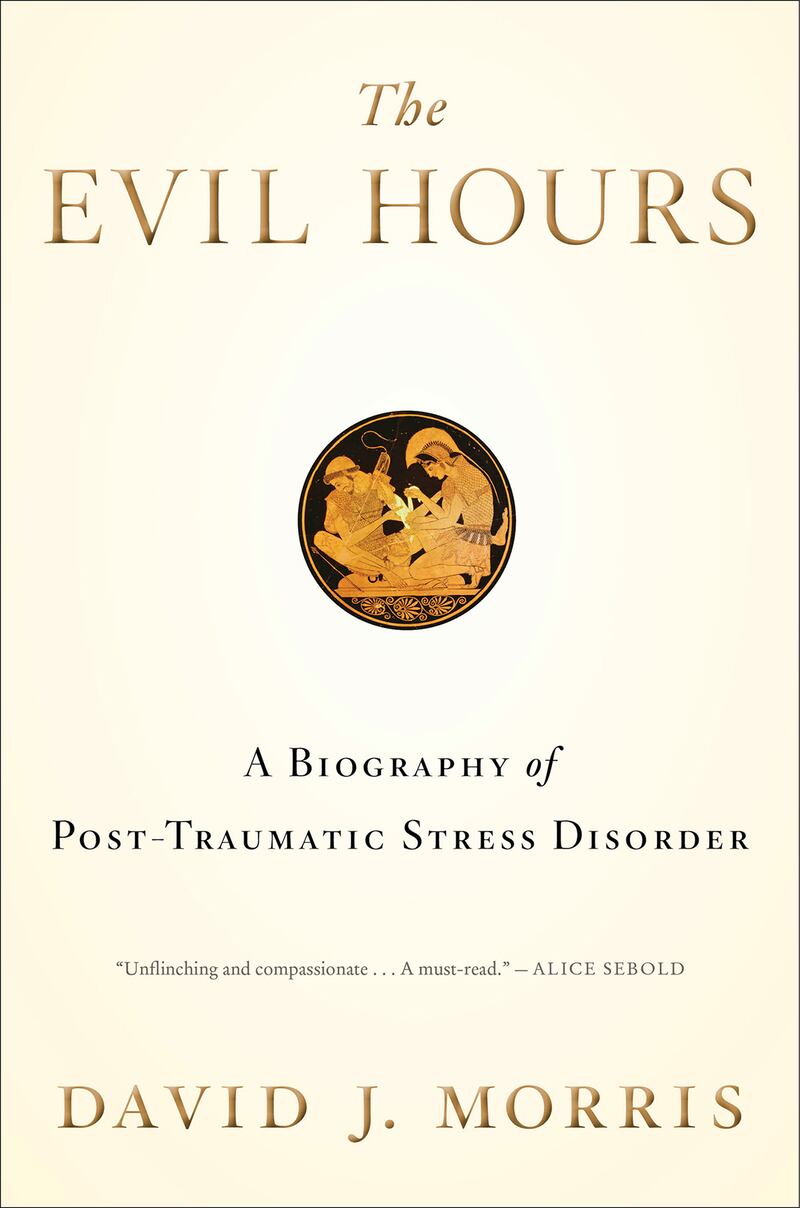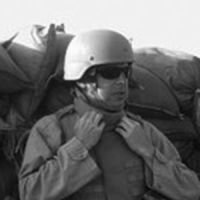Vietnam’s strong hold—not trauma, maybe, but close—on Michael Herr’s psyche comes across in the final words of his legendary Dispatches: “And no moves for me but to write down some last few words and make the dispersion, Vietnam, Vietnam, Vietnam, we’ve all been there.”
David J. Morris, a U.S. Marine veteran who later embedded as a journalist in Iraq, “disperses” his own experiences in The Evil Hours, an eloquent “biography” of post-traumatic stress disorder. Morris’s style often recaptures the disorienting tone of Dispatches’ stream-of-consciousness approach. But as with Herr, Morris’s excellent book is deceptively controlled and carefully steady.
In recent war-related reporting, “PTSD” has become a catch-all diagnosis for “broken soldiers,” often an empty phrase that never answers the how and why. Leeched of any deeper meaning, the acronym’s key word, “trauma,” remains in the background. The Evil Hours succeeds by examining the scientific background of the condition, conveyed with an elegiac grace. Morris’s often surrealistic prose subtly captures the detached, “unmoored” feeling that he ascribes to the PTSD experience.
ADVERTISEMENT
The brain subconsciously helps us let go of events, Morris explains, but can hold on to our most painful experiences with a damaging relentlessness. Using the memories of a roadside bomb and an attack on a helicopter, Morris describes his own throes of PTSD as truly evil times, beset by second-guessing and obsessive paranoia, in which the victim battles his own brain’s perception of constant threats—the brain believes it is performing the vital job of self-preservation.

Morris’ intense and necessary narrative combines his personal story with both present-day and historical research of this condition. The book will answer questions by those trying to make sense of their own brain’s inability to move past a trauma, and it will inform those familiar with the term “PTSD” but who don’t understand how trauma debilitates the brain’s capacity to distinguish between memory and active experience.
The Evil Hours is a pivotal addition to the growing war library of recent years, fiction and nonfiction, and it provides the necessary context to understand what is often unsaid or under-described.
As Morris writes, PTSD is a “disease of time,” with the brain stuck in a past moment of trauma. Put simply, to the brain, the trauma isn’t “post” at all.
The feeling can resemble fanciful nostalgia—“a shadowland of dream and reality,” Morris writes, quoting World War I writer Siegfried Sassoon’s description of a “queer craving to revisit the past and give the modern world the slip.” It can explain epic, heroic, and strangely self-destructive behavior, like World War I veteran George Mallory’s doomed 1926 attempt to scale Mt. Everest. In the moments of war, “immobility, powerlessness in the face of death, is often what vexes the psyche.” Is it any wonder that in the post-war years, men like Mallory, a veteran of the ghastly battle of the Somme, would try to take control over the most impossible situations?
Morris writes of mountain climber Steve House, who survived after hours trapped on a mountain ledge with a broken pelvis and ribs, and the writer Alice Sebold, who endured a sexual assault. Afterwards, both experienced the disorienting epiphany of “my life was over, my life had just begun.”
In a small way, these testimonies reminded me of a sudden sensation I had experienced while departing Iraq in 2007, at the conclusion of a trip as a freelance photojournalist. As the C-130 lifted off from Tikrit, headed to Kuwait, I felt a gravity-defying tug, psychically different than the plane’s ascent. Years later, re-reading interviews with the soldiers I reported on, I recognized a common thread when they spoke of the brain’s relaxation at that moment of a hard time’s conclusion. In that moment’s lightheaded euphoria, my brain was willing to tell me I was going to live. My brain could let go, at least for then.
But in the other extreme, as with accident victims or combat veterans or sexual assault survivors, the trauma creates a much more constant, in-between “liminal” state where there is no capacity to move on. The mind is “alternating between now and then, between here and there.” The “nervous system reverts back to the traumatic state—mobilized to confront an attacker,” creating “an observable physiological manifestation,” of sweat, fear, or action.
Morris has felt this sensation—and the book felt split into his personal “how it happened,” using his own experiences, and the scientific “why it’s hard to fix.”
When he describes various therapies, Morris writes in a more objective style, a scientist neutrally observing a subject: himself. This deliberate, well-paced approach firmly grounds the reader as Morris explores a broad array of treatments and challenges. One therapist demands that a frustrated Morris recite, over and over, a sequence of events, “prolonged exposure” to his trauma that Morris ultimately rejects. “I don’t remember feeling this bad in Iraq,” he finally says.
Morris describes therapy’s ups and downs, alongside the struggle to navigate the “recommended remedies … a truly bewildering variety of choices that can seem like a psychological supermarket.”
Yoga’s simple focus on the here and now, Morris argues, is as good a treatment as any other: “Yoga’s moronic, which is part of what makes it so great.” Part of recovery is also simply accepting the condition, even if the event does not rise to what one expects would be required.
A single mortar once exploded 15 feet from me, just on the other side of a concrete barrier. U.S. soldiers went out and found where it had been fired from—locating those telltale divots in the sand. The 15-foot gap is the difference between a divot dug in this way, instead of that way. Here instead of there. The mortar’s shotgun sound resonated even months later, replicated by a slamming door near my office. I’ve always felt self-loathing at the memory of those ridiculous, less-than-a-second beliefs that a mortar was landing—right then—in the courtyard of Hamilton Smith Hall at the University of New Hampshire.
The subconscious brain, as The Evil Hours evidence explains, doesn’t care when we consciously identify what something sounds like. In that moment, the brain reacts on what it decides the sound actually is; in the extreme, it defies rational arguments, appeals to “get over it,” and any deviation from the vital course of self-preservation.
The root of PTSD is that the brain is fighting a contradictory battle, pitting the illusion of old threats against the present day’s safe reality. It disperses the worst experiences to infect everything we do and see.
“America didn’t look the same when I came back to it that first time,” Morris says, and I have to think his closing words are tied to Herr’s equally plaintive callback to Vietnam, as Morris tries to inform and educate those struggling with this debilitating, relentless condition, who have “lost more than they ever knew they had,” to let them know that “it’s okay, it’s okay, it’s okay.”





